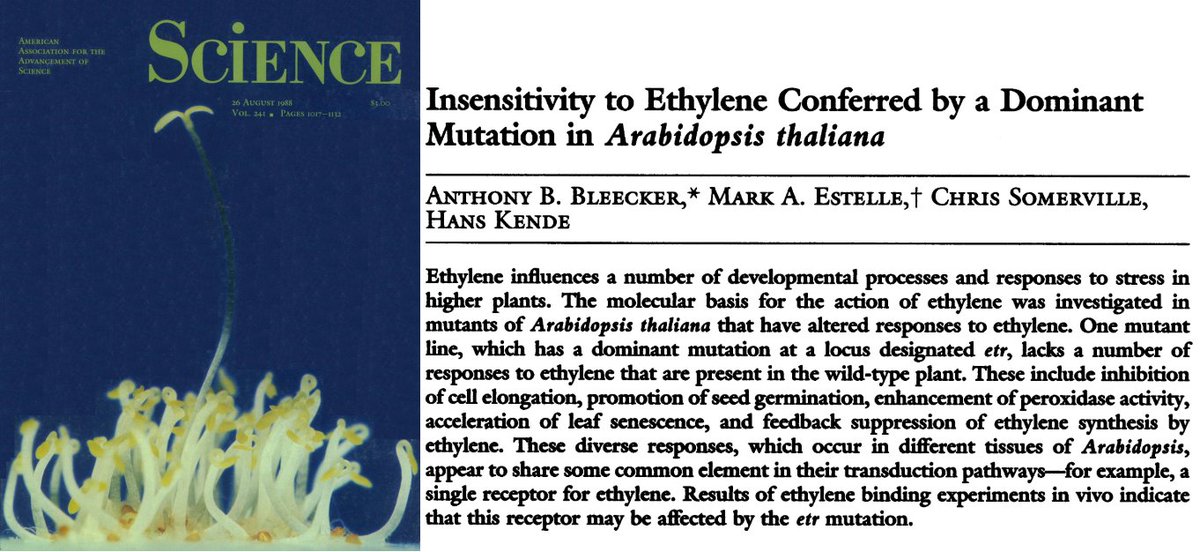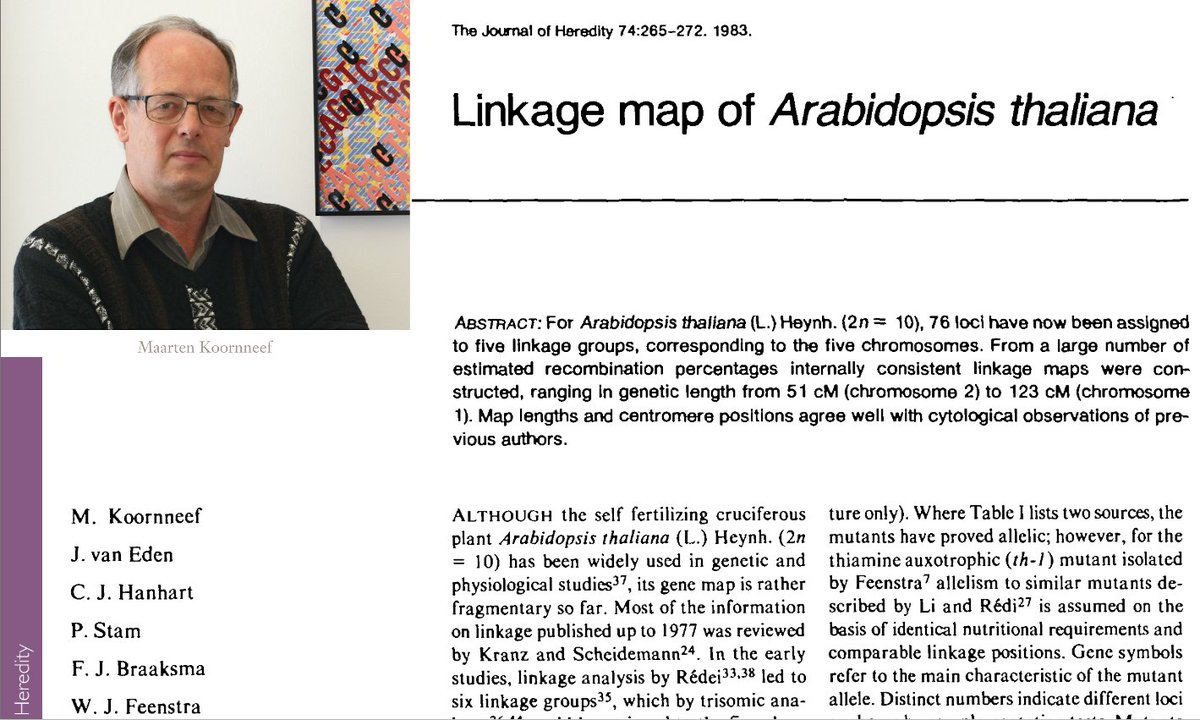#PlantScienceClassics #5: “Jumping Genes”. In 1950 Barbara McClintock published her landmark @PNASNews paper on the #Maize Dissociation (DS) & Activator (Ac) #TransposableElements, revolutionizing the field of #Genetics to hostile opposition from her peers.doi.org/10.1073/pnas.3… 

McClintock started her career & work on #Maize in the 1920s @Cornell, where she immediately made an impact by optimizing chromosome staining methods to characterize the chromosomes of triploid maize in 1929, & then describing the physical basis for chromosomal crossover in 1931. 

In 1941 she relocated to @CSHL, where she worked on chromosome breaks in maize. When characterizing a specific break on chromosome 9, she noticed that the break was always associated with a locus she named Dissociation (DS), which could change its position on the chromosome. 

Subsequently she found that another locus, which could autonomously transpose, Activator (Ac), was necessary for DS to jump. But it was not the identification of these two #JumpingGenes that were revolutionary for the field, but rather the correct(!) conclusions McClintock drew. 

At the time, the genome was considered fixed, with genes linearly lined up like ‘beads on a string’,& mutations were final & irreversible. McClintock elegantly demonstrated that this was all false. Genes could ‘jump’, & they could mutate & ‘repair’ another gene,by jumping in&out.
They could also control and alter the expression of genes in their proximity, another controversial, yet correct, conclusion she made. Accordingly, her work was met with “puzzlement, even hostility” from the field, she remembered later.
But, she also added, ‘It didn’t bother me, I just knew I was right. Anybody who had had that evidence thrown at them with such abandon couldn’t help but come to the conclusions I did about it’. Her fellow maize geneticists were first to accepted her findings,others needed longer.
The general genetics community only accepted her work, when work on Drosophila in the 1970s ‘confirmed’ her findings. Thankfully, for a change, the @NobelPrize committee actually awarded the 1983 prize to McClintock, rather than a male #Drosophila researcher repeating her work. 

Further reading: An article on McClintock’s work @PNASNews by @sandeeprtweets: doi.org/10.1073/pnas.1… ; an Barbara McClintock’s Nobel Lecture: nobelprize.org/prizes/medicin…
• • •
Missing some Tweet in this thread? You can try to
force a refresh




















